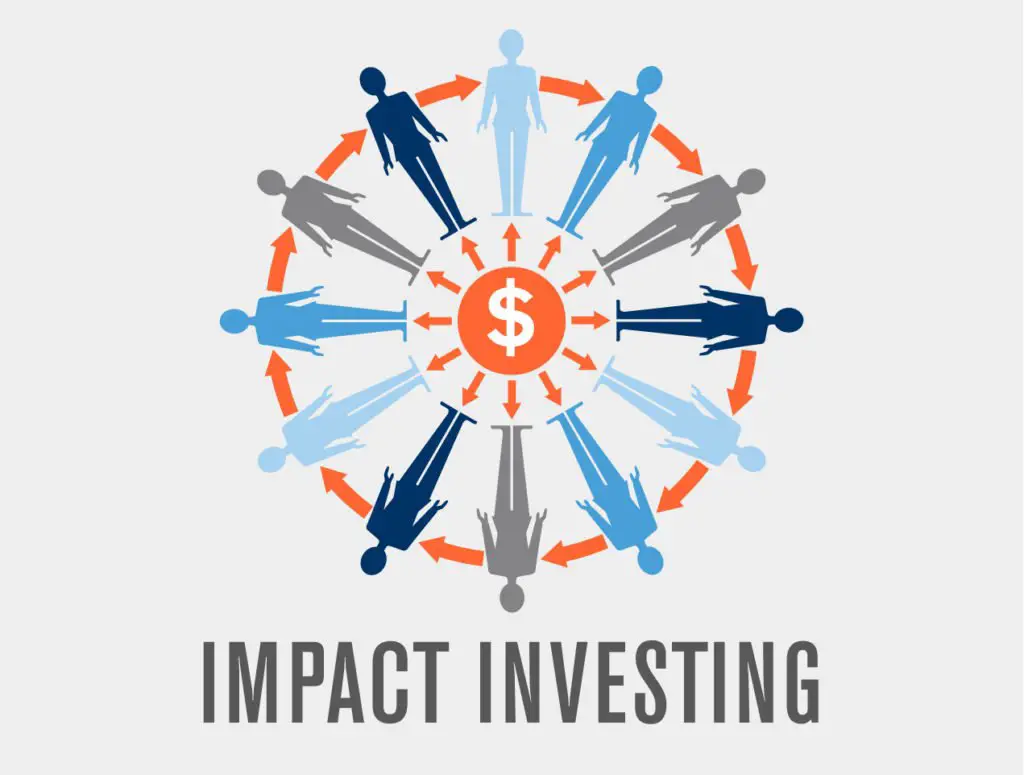Are you curious about social impact investing? Look no further! This article will provide you with a concise and conversational introduction to this increasingly popular investment strategy. So, what is social impact investing exactly? It is an approach that allows investors to generate positive social and environmental impact while also earning financial returns. By actively directing their funds towards businesses and projects that align with their values, investors have the power to make a difference. Let’s explore this exciting field and uncover the potential it holds for creating a better world through purposeful investments.
What is Social Impact Investing?
Social impact investing is an innovative approach to generating measurable social and environmental impact alongside financial returns. It is an investment strategy that seeks to address pressing global challenges, such as poverty, inequality, climate change, and sustainable development. Unlike traditional investing, where the sole focus is on financial returns, social impact investing aims to create positive change in society and the environment.
Social impact investing is driven by the belief that capital can be a powerful tool for achieving social and environmental goals. It brings together investors, philanthropists, and social entrepreneurs who are committed to making a difference in the world. By directing their investments towards projects, organizations, and businesses that have a positive social and environmental impact, investors can support sustainable growth and address social issues.
The Evolution of Social Impact Investing
Social impact investing has gained momentum in recent years, with a growing recognition of the interconnectedness between financial success and social well-being. It has its roots in responsible investing and ethical investing, which emerged in the 1970s and 1980s, respectively. These approaches focused on excluding certain controversial industries or companies from investment portfolios based on environmental, social, and governance (ESG) criteria.
However, social impact investing goes a step further by actively seeking investments that have a positive impact on society and the environment. This approach recognizes that financial returns and social impact are not mutually exclusive, but rather can be mutually reinforcing. It encourages investors to consider the broader social and environmental implications of their investment decisions.
The Principles of Social Impact Investing
Social impact investing is guided by a set of principles that help ensure the integrity and effectiveness of the approach. These principles include:
1. Intentionality: Investors actively seek out opportunities that align with their desired social and environmental outcomes.
2. Measurable Impact: Investments are evaluated based on their ability to generate measurable and positive social and environmental outcomes.
3. Financial Returns: Social impact investments are expected to generate financial returns, although these may vary depending on the specific objectives of the investment.
4. Accountability and Transparency: Investors and investees are accountable for reporting on the social and environmental impact of the investments.
5. Collaboration: Social impact investing encourages collaboration among various stakeholders, including investors, governments, nonprofits, and social enterprises, to address complex social and environmental challenges.
Types of Social Impact Investments
Social impact investments come in various forms, depending on the specific objectives and target outcomes. Some common types of social impact investments include:
1. Community Development Finance: Investments that support the development of disadvantaged communities, such as affordable housing, community infrastructure, and small business development.
2. Microfinance: Investments that provide financial services, such as microloans and savings accounts, to low-income individuals and small businesses in emerging markets.
3. Renewable Energy: Investments in renewable energy projects, such as solar and wind farms, that contribute to reducing carbon emissions and promoting sustainable energy sources.
4. Education and Workforce Development: Investments that support educational programs, vocational training, and initiatives aimed at improving access to quality education and employment opportunities.
5. Healthcare and Wellness: Investments in healthcare facilities, technologies, and services that improve access to quality healthcare and promote wellness in underserved communities.
The Benefits of Social Impact Investing
Social impact investing offers a range of benefits for both investors and society as a whole. Some of these benefits include:
1. Alignment of Values and Investments: Social impact investors can align their personal values with their investment decisions, allowing them to contribute to social and environmental causes they care about.
2. Positive Impact: By directing capital towards projects and businesses that have a social and environmental impact, social impact investors can contribute to positive change on a large scale.
3. Financial Returns: Contrary to the misconception that social impact investing sacrifices financial returns, studies have shown that it is possible to achieve both financial and social returns simultaneously.
4. Addressing Global Challenges: Social impact investing provides a platform to address pressing global challenges, such as poverty, inequality, climate change, and sustainable development, contributing to a more sustainable and equitable future.
5. Collaboration and Innovation: Social impact investing fosters collaboration among different stakeholders, encouraging innovative solutions to complex social and environmental problems.
Challenges and Future Outlook
While social impact investing has gained significant traction in recent years, it still faces several challenges:
1. Measuring Impact: Measuring and evaluating the social and environmental impact of investments can be complex, as impact can take various forms and may be difficult to quantify.
2. Availability of Investment Opportunities: The availability of suitable investment opportunities that align with social and environmental objectives can be limited, particularly in certain sectors or regions.
3. Financial Viability: Ensuring that social impact investments are financially viable and can deliver competitive financial returns is crucial for attracting mainstream investors.
4. Policy and Regulatory Environment: A supportive policy and regulatory environment is essential for the growth and scalability of social impact investing.
Despite these challenges, the future outlook for social impact investing is promising. The field is evolving rapidly, with increased collaboration among stakeholders, improved impact measurement methodologies, and the development of innovative financial instruments. As more investors recognize the potential for generating both financial and social returns, social impact investing is expected to continue its growth trajectory, making a significant contribution to addressing global social and environmental challenges.
In conclusion, social impact investing represents a powerful mechanism for driving positive change in society and the environment. By combining financial returns with measurable social and environmental impact, it offers investors an opportunity to align their investments with their values and contribute to a more sustainable and equitable future. As the field continues to evolve, social impact investing has the potential to transform the way capital is deployed, unlocking new opportunities for impact and sustainable development.
What are example of social impact investing?
Frequently Asked Questions
Frequently Asked Questions (FAQs)
What is social impact investing?
Social impact investing refers to an investment strategy that seeks to generate both financial returns and positive social or environmental impacts. It involves investing in companies, organizations, or funds that aim to address social or environmental issues while still generating a financial return.
How does social impact investing work?
Social impact investing works by allocating capital to businesses, projects, or funds that have a clear social or environmental mission. Investors evaluate the potential financial returns as well as the social or environmental impact of the investment, aiming for a balance between both aspects.
What sets social impact investing apart from traditional investing?
Unlike traditional investing, social impact investing focuses on generating positive social or environmental outcomes alongside financial returns. It places equal importance on the financial viability and the social impact of an investment, creating a dual bottom line.
What are some examples of social impact investments?
Social impact investments can take various forms, such as investing in renewable energy projects, microfinance institutions, affordable housing initiatives, or companies dedicated to sustainable agriculture. Each investment aims to address a specific social or environmental challenge.
Who are the typical investors in social impact investing?
Social impact investing attracts a diverse range of investors. It includes individuals, foundations, family offices, pension funds, and even governments or development finance institutions. Anyone interested in aligning their investments with their personal values or contributing to positive social change can be a social impact investor.
What are the potential benefits of social impact investing?
Social impact investing provides an opportunity to generate financial returns while making a positive difference in society. It allows investors to align their investments with their values, contribute to sustainable development, and address pressing social or environmental issues.
What are the risks involved in social impact investing?
As with any investment, social impact investing carries certain risks. These risks can include financial loss, social or environmental project failures, regulatory changes, and market volatility. It is crucial for investors to conduct thorough due diligence and understand the risks associated with each investment opportunity.
How can I get involved in social impact investing?
To get involved in social impact investing, you can start by educating yourself about different investment opportunities, strategies, and impact measurement methodologies. Research social impact investment funds or platforms that align with your interests, and consider consulting with a financial advisor specializing in sustainability and impact investing.
These FAQs aim to provide a basic understanding of social impact investing. If you have further questions or need specific information, please reach out to our support team or consult with a financial professional.
Final Thoughts
Social impact investing is a powerful approach that seeks to generate measurable social and environmental impact alongside financial returns. By investing in companies, organizations, and funds that address pressing global challenges, individuals and institutions can contribute to positive change. Social impact investments can support a wide range of sectors, such as affordable housing, renewable energy, education, and healthcare. These investments aim to drive sustainable solutions and create meaningful societal benefits. Embracing social impact investing allows individuals and organizations to align their values with their financial goals while making a difference in the world. So, what is social impact investing? It is an opportunity to invest with purpose and create meaningful change.



